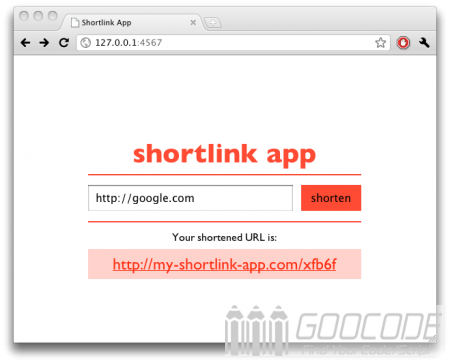Short URL implementation principle is that there is a data table configuration file will be short URL and the actual URL corresponding, when a short URL request, the program jump to the corresponding actual URL up, in order to achieve the URL of the visit.
Method 1: PHP + MySQl implementation of short URL generation and reading
Conventional program we will generate a good short URL and the original site corresponding to a data table, and then for reading use. Let's start by looking at how to generate a unique short URL.
//generate short urls
function code62($x){
$show='';
while($x>0){
$s=$x % 62;
if ($s>35){
$s=chr($s+61);
}elseif($s>9&&$s<=35){
$s=chr($s+55);
}
$show.=$s;
$x=floor($x/62);
}
return $show;
}
function shorturl($url){
$url=crc32($url);
$result=sprintf("%u",$url);
return code62($result);
}
echo shorturl('http://www.goocode.net/');
//1EeIv2 Use the above PHP code can generate a unique 6-bit short URL, and then we will generate a short URL with the original URL to write to the MySQL table, insert the database code here I do not write, this is the PHP foundation.
Then we have a link.php used to receive the read url and implement a real jump.
include_once('connect.php'); //connet db
$url = $_GET['url'];
if(isset($url) && !empty($url)){
$sql = "select url from shorturl where codeid='$url'";
$query = mysql_query($sql);
if($row=mysql_fetch_array($query)){
$real_url = $row['url'];
header('Location: ' . $real_url);
}else{
header('HTTP/1.0 404 Not Found');
echo 'Unknown link.';
}
}else{
header('HTTP/1.0 404 Not Found');
echo 'Unknown link.';
} In code, if the short URL corresponding to the real url, will use the header to jump to the real page, or return 404 code. So we can use such as: http: //yourdomain/link.php? Url = xxx to achieve short URL access.
Continue, we use the URL rewrite rewrite function to achieve such as through the address: http: // yourdomain / xxx to visit.
The following is the rewrite rule:
#Apache rules:
RewriteRule ^/(.*)$ /link.php?url=$1 [L]
#nginx rules:
rewrite ^/(.*)$ /link.php?url=$1 last; Method 2: PHP + ini implements short URL technology
The benefits of using the database for scenario 1 are easy to use, and a large number of short URL queries need to be optimized. And program 2 to give up the database, use the ini configuration, we will be short URL and real URL configuration in the ini file, PHP directly through parse_ini_file () to read the ini file, a few lines of code can achieve short URL jump.
The links.ini file is configured like this:
google= https://www.google.com/
facebook= https://www.facebook.com/
youtube= https://www.youtube.com/
goocode= http://www.goocode.net The index.php code can be written like this:
$links = parse_ini_file('links.ini');
if(isset($_GET['l']) && array_key_exists($_GET['l'], $links)){
header('Location: ' . $links[$_GET['l']]);
}
else{
header('HTTP/1.0 404 Not Found');
echo 'Unknown link.';
} Of course, we also need to configure the rewrite rule.
#Apache rules:
RewriteRule ^/(.*)$ /index.php?l=$1 [L]
#nginx rules:
rewrite ^/(.*)$ /index.php?l=$1 last; In contrast, the second program for small applications, you can also address the array to save the form, you can also do a management interface to maintain these short Web site.

